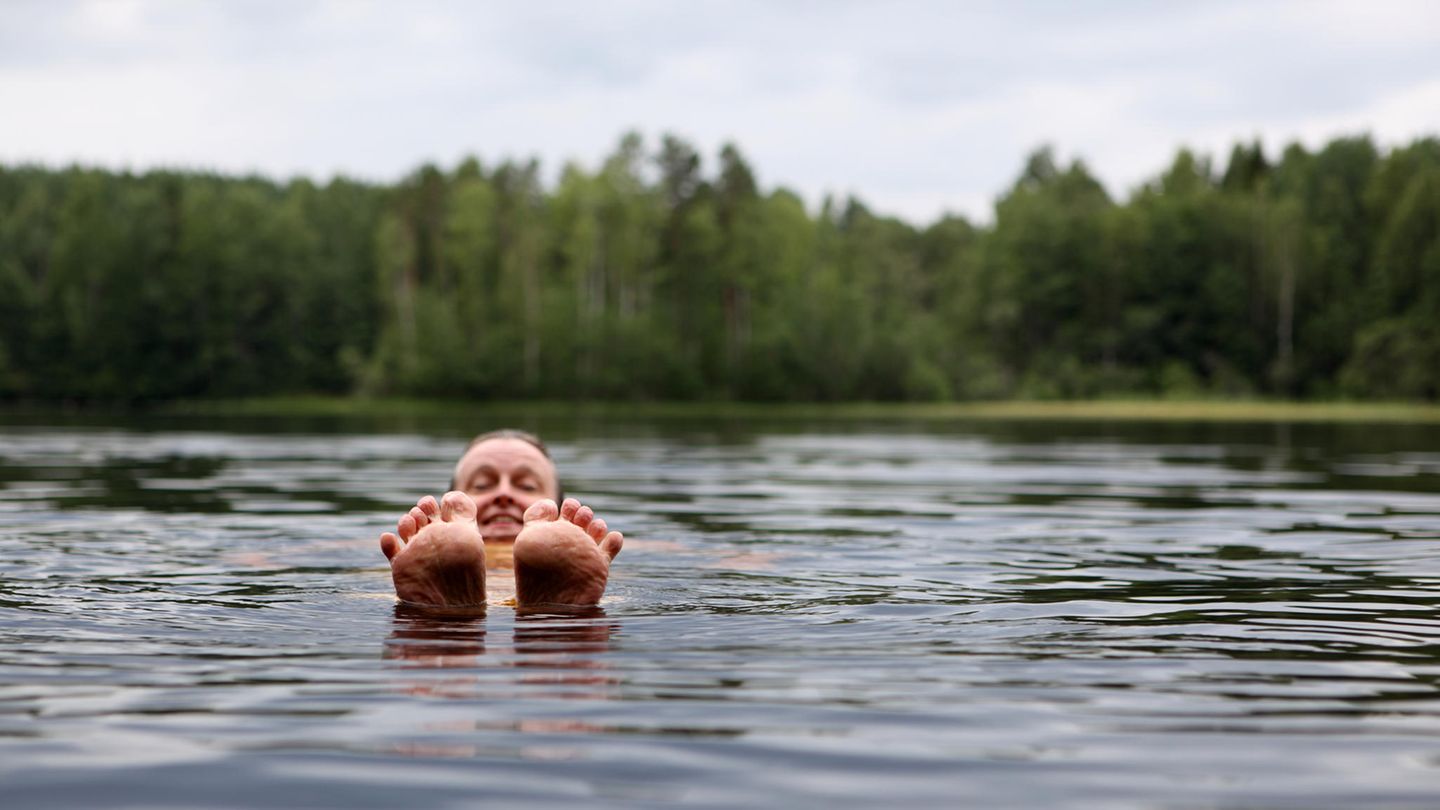Swimming lake instead of outdoor pool, nature instead of chlorine – sounds good? So-so. If you’re not careful, you’ll end up in a body of water with blue-green algae or cercariae and come home sick. You should keep an eye on this.
A little splashing, a little diving, floating in the water for hours on an air mattress – lucky for those who have a bathing lake nearby. Away from chlorinated outdoor pools and diving platforms, the best place to swim is still in the great outdoors, isn’t it? You can swim safely in most bathing waters in Germany, the water quality is good to very good. However, if the temperature is high, the water can become a health hazard, and sometimes it may even be necessary to close the bathing lake.
Blue-green algae produce water-soluble toxins
In 2023, 155 of 2291 bathing waters examined in Germany were closed as a precautionary measure to protect bathers, sometimes only temporarily, sometimes for the entire season. The reason for this was poor hygienic water quality. In most cases (94), blue-green algae were responsible. These cyanobacteria are widespread in Germany. Algae formation is promoted by persistent high temperatures with lots of sun and little wind. Massive blue-green algae proliferation can occur in lakes, preferably in large, shallow ones, but also in the sea.
These blue-green algae are a problem for bathers and animals because cyanobacteria produce toxins that are soluble in water. In high concentrations, these are hazardous to health. If swallowed or in contact with the skin, the toxins can cause nausea, diarrhea, vomiting, aching limbs, earache and conjunctivitis. Allergic reactions and skin irritations are also possible.
The Federal Association for the Environment and Nature Conservation therefore advises against swimming in waters that appear greenish or bluish-green in colour, where streaks, algae carpets or a cloud-like distribution can be seen in the water, where dead fish are floating on the surface of the water and where you can hardly see your feet when standing knee-deep in the water.
Nasty wound infections caused by vibrios
The rod-shaped bacteria occur in fresh and salt water and are also part of the normal bacterial flora in the North and Baltic Seas, writes the Robert Koch Institute (RKI). These vibrios are not Vibrio strains that can cause cholera. If the water temperature rises above 20 degrees, the vibrio content also rises quickly. At such temperatures and a low salt content in the water (0.5-2.5 percent), the bacteria multiply rapidly.
Vibrios usually enter the body through skin injuries. The first symptoms appear about 12 to 72 hours after infection. An early symptom of an infection with Vibrio vulnificus can be disproportionately strong pain in the wound region, according to the RKI. Other symptoms include gastroenteritis infections, but also wound infections. Vomiting, diarrhea, fever and chills are possible, and in severe cases sepsis or necrosis can also occur. Severe courses of the disease can be fatal. People with chronic diseases and immune deficiencies are particularly at risk. More about .
Bathing dermatitis caused by cercariae
Anyone who suffers from severe itching, reddened skin or hives after bathing has probably caught bathing dermatitis caused by cercariae. Cercariae are the larvae of flukes. They are parasites that mostly attack animal hosts, but also humans. The larvae can also burrow into the skin of humans and trigger an itchy allergic skin reaction. However, the infestation is superficial and is considered harmless because humans are an accidental host. The cercariae cannot penetrate further into the body and die.
Bathing dermatitis is generally harmless but persistent. In severe cases, however, a cercariae infestation can also lead to fever and shock. Ointments help against the itching. If you scratch, you risk skin inflammation. Cercariae dermatitis usually goes away on its own in 10 to 20 days. It is advisable to avoid shallow areas of the shore, change clothes after swimming and rub the skin vigorously to avoid cercariae dermatitis.
The current state of German bathing waters can be found at a .
Source: , ,,
Source: Stern
I’m Caroline, a journalist and author for 24 Hours Worlds. I specialize in health-related news and stories, bringing real-world impact to readers across the globe. With my experience in journalism and writing in both print and online formats, I strive to provide reliable information that resonates with audiences from all walks of life.




